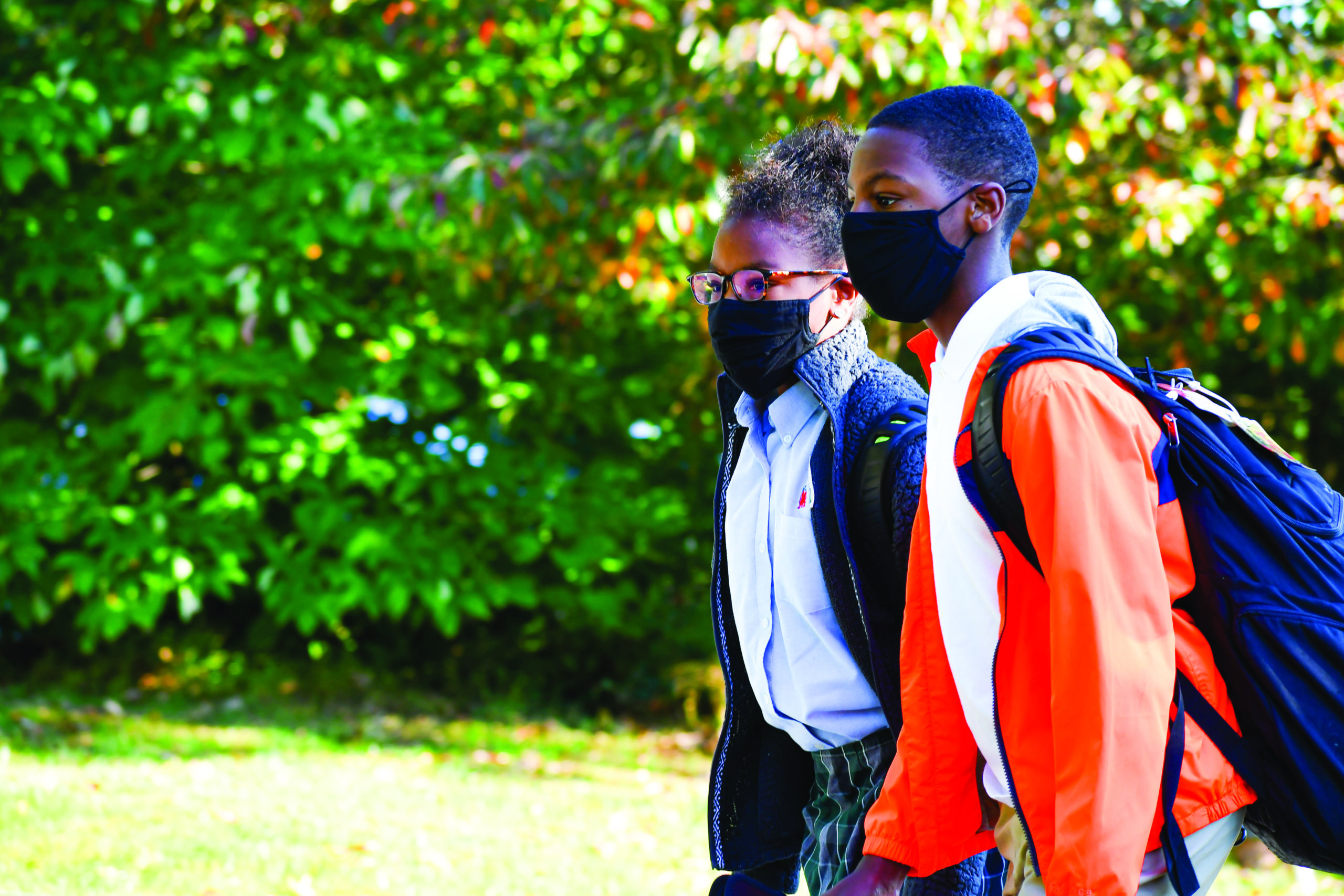News
March 17, 2021
Restoring Community in the Middle School
Kevin Boland Sr.

As I was looking back recently at “A Day in the Life of a Middle Schooler,” a promotional video we filmed during less turbulent times, I couldn’t help but think how much things have changed in the past year. To say the current educational landscape is something we could never have imagined is an understatement. As a teacher, coach, and division head at Glenelg Country School for over 40 years, I have always valued the personal side of what we do and our teachers’ close relationships with students. The virtual and hybrid educational landscape of recent months has been the most challenging hurdle of my career precisely because it makes building the personal connections that are a mainstay of GCS so formidable.
This summer, I worked on campus. Many days, a handful of deer near the school entrance or a flock of geese on the athletic fields greeted me. They would stare at me as if wondering why I was there, but otherwise, they paid little attention to my movement. The empty parking lots gave me an eerie feeling, like something from a science fiction movie.
On some days, I turned the silent Middle School, where I am so used to hearing the hustle and bustle of daily activity, into an obstacle course. I sprinted up and down the hallway, ran sets of stairs in the lobby, and mastered sit-ups and push-ups in-between. I even dusted off my unicycle and learned to ride again using the hall lockers as guide rails. The carpet was my savior. This summer scene was not GCS as I knew it, and I worried it would stay this way for some time. I was not happy. The atmosphere in the Middle School felt off without students or a specific date for their return.
We’ve evolved since then. We’ve found moments of joy and many opportunities to reestablish the GCS we know and love. Middle School teachers have worked tirelessly to reconfigure and reimagine their courses and find new ways to forge those all-important connections with their students. Restored is the atmosphere that I love, though it certainly looks different.
Our distance and hybrid learning programs have evolved from the tentative first steps of last March. We launched immediately into “emergency learning,” as we sought to mitigate learning loss and maintain a sense of normalcy for our students. As Brita Stewart, Middle School dean of students, and I began to develop plans for a more long-term approach, we stepped back to assess the most crucial elements of our program. We determined that active learning, academic and personal growth, student choice, and a strong sense of community were most important.
From there, we sought to create a schedule that would effectively meet our students’ needs and could easily move from virtual to hybrid to in-person with minimal impact on the students’ daily lives. Knowing that the students, families, and faculty face an exhausting amount of uncertainty from day to day in every aspect of life, we wanted to introduce a measure of predictability in this way. Additionally, we needed to align with the Upper School to accommodate shared faculty and families with siblings in multiple divisions. The resulting program has brought out the best in our students.
Today, we are still managing uncertainty and disruption at every turn. We have had to be willing to bend, adjust, and do things a little differently. When music teacher MaryAnne James learned that singing indoors would be prohibited, she improvised. She moved her piano outdoors, spaced students 10 feet apart, and let the show go on—with half of the choir propped on the piano, participating virtually. We also adapted our annual Barlow Public Speaking Competition for the times. This year, students submitted video entries. We refuse to break a tradition that has stood for 55 years.
Every day that we can safely be together on campus is rejuvenating. Our students are amazingly resilient and resourceful. What sport requires a soccer ball and a tennis net? Our eighth graders invented such a game that involves a byzantine set of rules and lots of cheering, through masks. Can’t use the water fountains? Bring a hefty water bottle to school and drop it at least three times per class. We make our own fun!
Virtual students remain engaged through our use of Microsoft Teams. Beyond regular classes, our Digital Dragons participate in clubs, study hall, Lobby meetings, and advisory, which are essential to our school community. On Wednesdays, all students are virtual, so we have devoted this time to one-on-one advisor-advisee conferences, office hours, and our team-taught Connections class that addresses life skills, academic skills, personal development, and wellness.
Who knows how we will see this period when we look back years from now. We will remember the hardships, certainly, but we will also see the impact it has had on this generation of students. Beyond the missed milestones lies a certain tenacity, creativity, and self-advocacy that is wonderfully inspiring. If our students are any indication, the future is bright.

